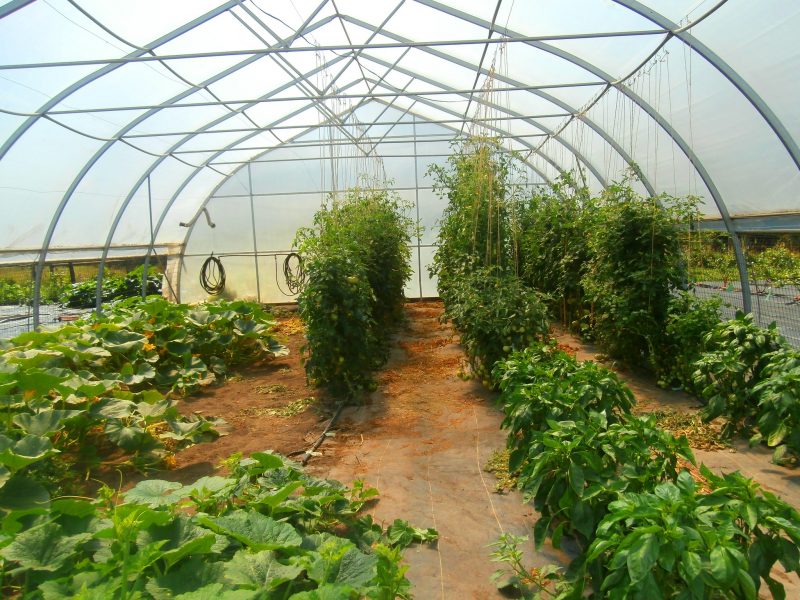The greenhouse can be a farmer’s dream oasis. What temperature to start planting in a greenhouse is crucial to the plant’s development. It is where you can have ideal environments, including convenient doors and lockable features, to keep things in the best conditions. These allow you to grow bigger plants for the entire family.
With this considered, the right temperature to start planting in a greenhouse must be known. Temperature, alongside different other pointers, will be critical in giving the plants the correct levels they need so that they can grow into beautiful products.

What Temperature Is Best For A Greenhouse
What temperature to start planting in a greenhouse is about 85 degrees Fahrenheit, at the most. Of course, there will be adjustments coming your way because of the differences between the plants. The rule of thumb — you must be able to keep this temperature consistent.
What Temperature Can You Start Planting
Greenhouses, first and foremost, must be able to harness the sun’s energy or solar power to be able to heat the interior surroundings. However, some may have supplemental sources for the heat powered by other sources, including electric heaters and gas. This is likewise, okay.
Similar to your cars, the interior of the building may quickly heat up to more than 100 degrees Fahrenheit on warm, sunny days, so what you need to regulate temperature must be in place, or you are risking your plants into dying. Always work for the best of your garden’s interests.
Vents must also be set in the greenhouses, and this could be the top vent that opens the hatch in your ceiling or side vents that may whisk out hot air, ushering in cooler air. You may opt to use vents with automatic or manual operations.
Manual vents tend to be more affordable but take note that you have to open and close the vents or open the doors during the daytime and close these at night. Some people and individuals think this remains a hassle, and for those who are working outside during the day.
This is where you can utilize the automatic systems. They work with sensors that will provide the ideal temperature range through which you must cultivate. They automatically change according to the demands of the environment, considering the changes in the pattern of the weather.
Can A Greenhouse Get Too Much Sun
To answer the question of whether a greenhouse gets too much sunlight, there are essential pointers to know. Sunlight is crucial to maintaining the plant’s good health.
A plant cannot grow without the sun; there are no two ways about it. Without the sun, your seeds would never even sprout from the soil, let alone grow and produce.
Harnessing the sun’s energy
Greenhouses are likewise present to harness solar power at higher levels. These are constructed from clear or glass plastic most of the time, but you can find other sets of materials as well. With this setup, the farmer can allow the optimum levels of sunlight to enter into the greenhouse.
As the sun enters, it turns to heat as it hits the ground or plants within the greenhouse. Since these structures are sealed, the heat may linger for a moment and warm up the air. You can realize these benefits in colder months.
Afternoon sunlight
What is the significance now of the afternoon sunlight when planting in your greenhouse? Mostly helpful during the summer, this may be intense for greenhouse plants, since being covered with glass, it lets indirect light to damage and strike the plants.
To balance everything, what you can do is to establish deciduous trees on the west side of the greenhouse, kind of like Oriental space features, or install filters into the canopy, with winter light and fall penetrating through the limbs to offer warmth once the temperature drops. This control system lets you manage the light exposure in the greenhouse.
What Temperature Is Too Cold For Plants?
Plants may also feel the coolness in the air, and may not be great for their growth. You do not want your product to get affected by too much low temperature. Take note that plants tend to freeze when temperatures are at 28 degrees Fahrenheit for five hours.
Yet, there are exceptions to this rule. Considering the tender new leaves of seedlings, they may give up their form when temperatures drop to 33 degrees Fahrenheit. The situations can be different from tropical plants since they have different low-temperature thresholds.
Should you predict temperatures lower than 32 degrees Fahrenheit, take action, and protect your plants. It has been said that even as little as 28 degrees Fahrenheit may be destructive to your plantation and vegetation.
Managing, according to frost, is necessary for tender plants like begonias, impatiens, geraniums, peppers, and tomatoes.
Can Plants Recover From Cold Shock?
In the greenhouse, there are also changing climates. If you see your plants are damaged by a cold shock, as a responsible farmer, do not panic. There are steps to follow in dealing with this issue with flying colors.
First, you are advised to remove the plant and transfer them to a warmer area as soon as you can. Take them indoors, and get started with your winter preparations immediately. Leave them in the area and provide them with warmth. These plants are resilient, but once they get damaged, they may quickly die or fall off. Full recovery may take several months, but they bounce right back in with proper care.
Having said this, checking the temperature in the greenhouse to make sure these plants are growing right involves the effort of the gardener to read resources like these, and regularly attend to the greenhouse. The secret is to get your hands in the garden and get dirty.
